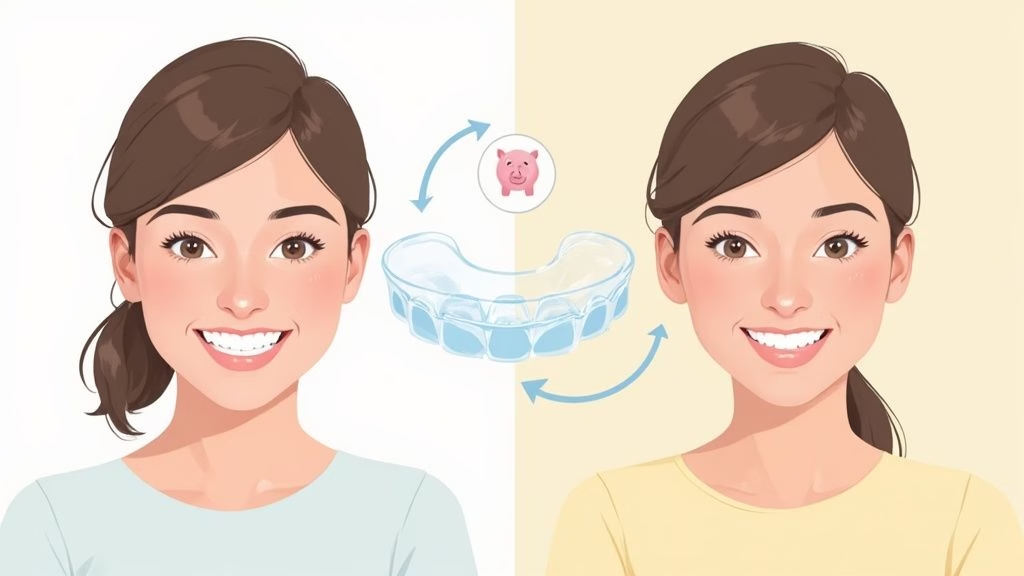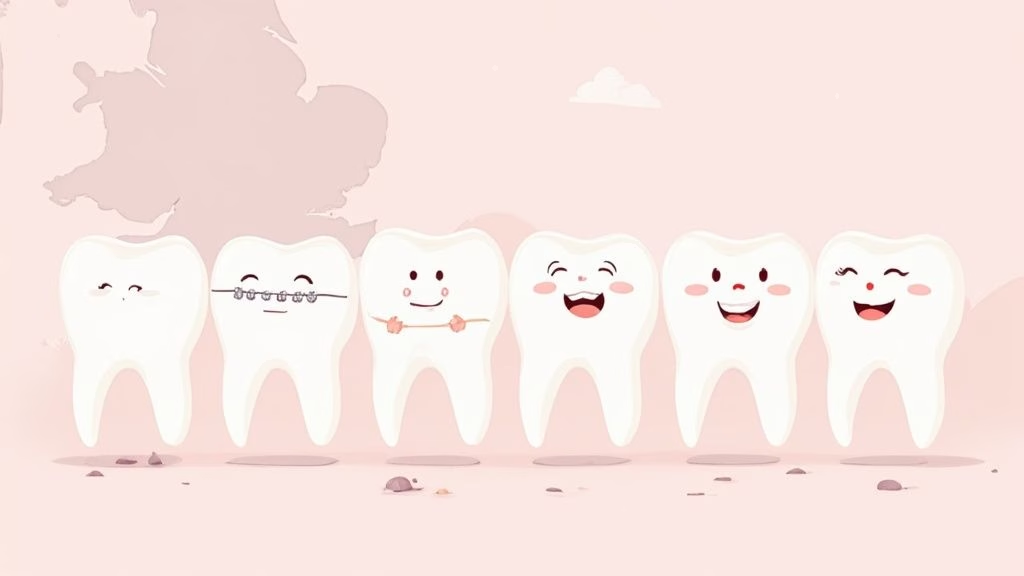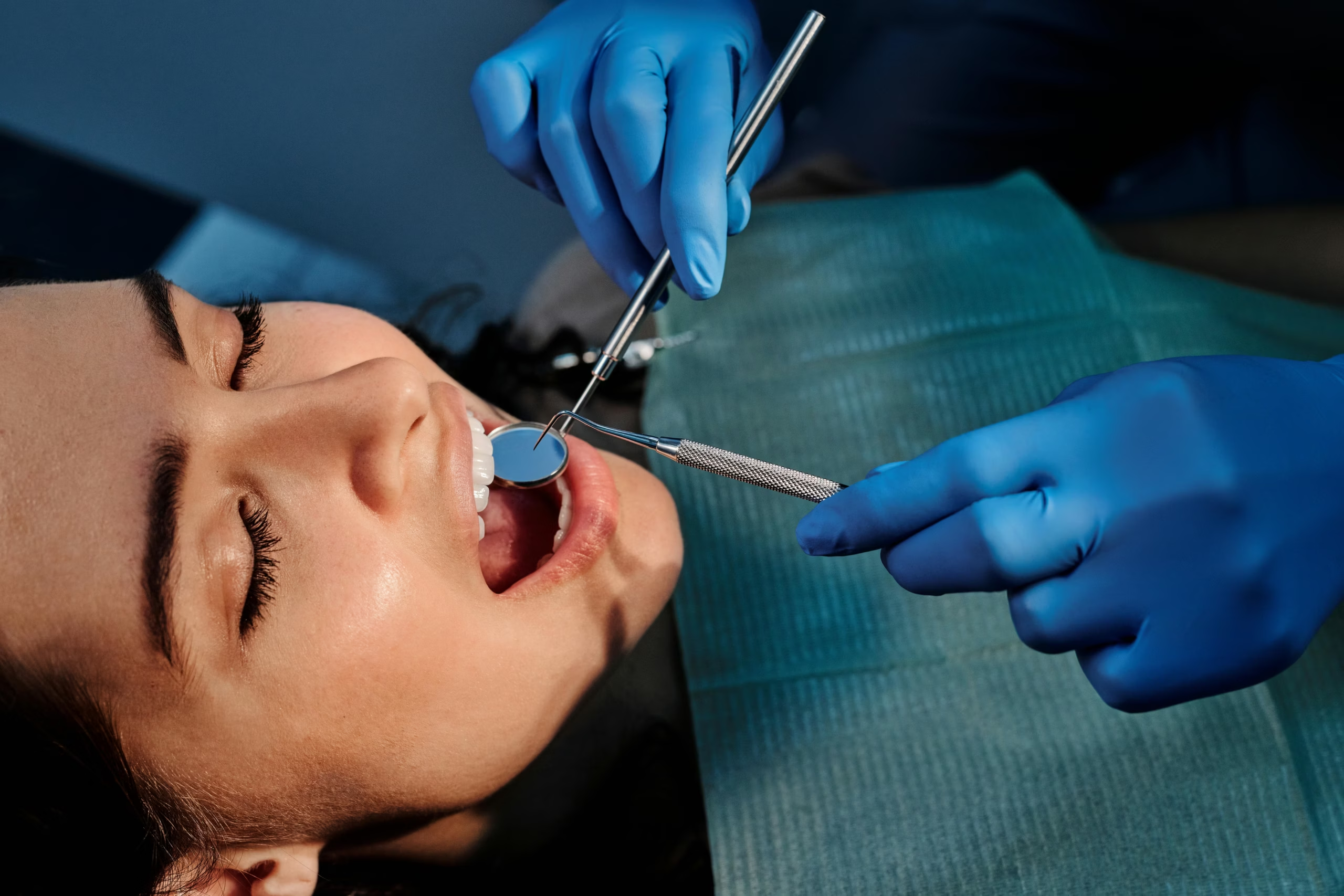How to Clean Teeth Straightening Aligners: The Ultimate Guide for Crystal-Clear Results
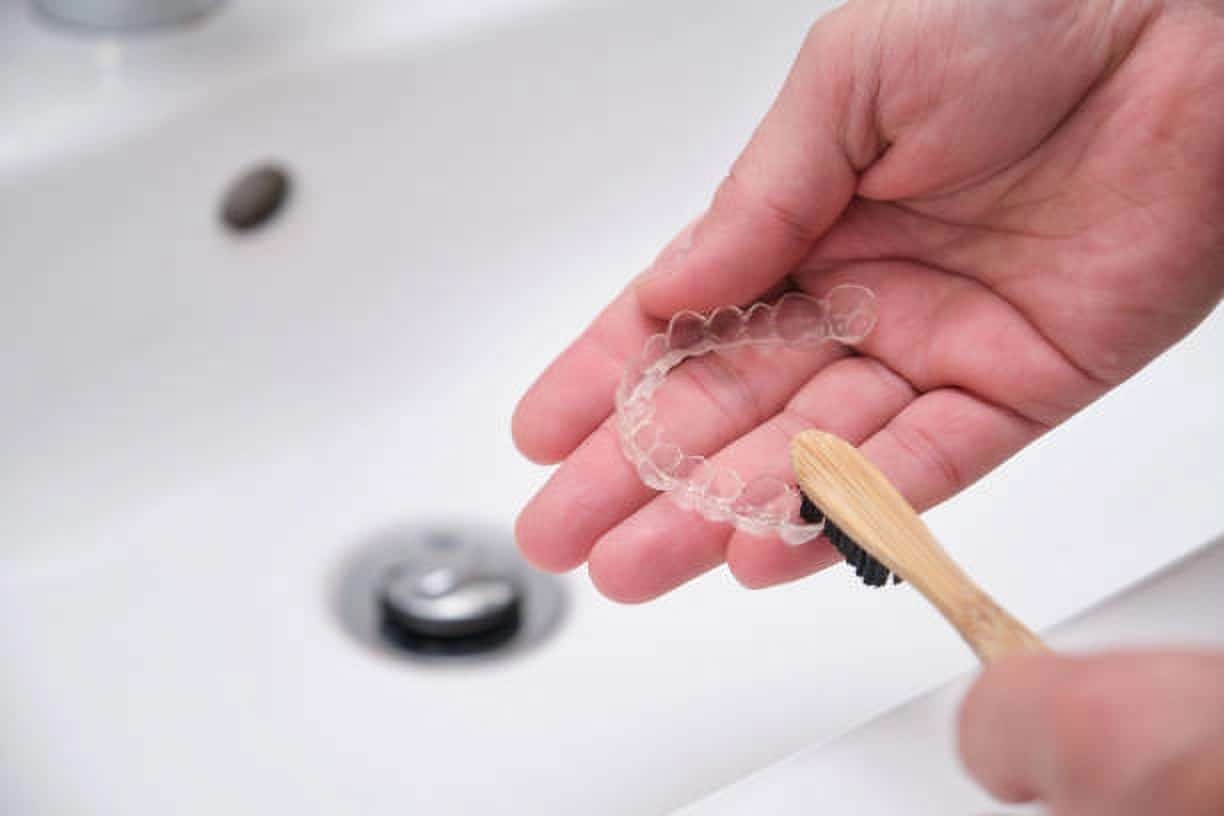
Understanding the Science of Aligner Care
Taking good care of your teeth straightening aligners directly impacts how well they work. Research shows that microscopic buildup can significantly affect treatment results. By understanding the science behind proper aligner care, you can take steps to get the best outcome from your orthodontic treatment.
The Impact of Bacteria
Your aligners create an environment where bacteria thrive – warm and moist conditions that promote rapid growth. Without regular cleaning, biofilm (a sticky layer of bacteria, plaque, and food particles) quickly builds up on the aligner’s surface. This not only makes your aligners look cloudy but can also harm your oral health and prevent them from shifting your teeth effectively.
Why Cleaning Matters
Not cleaning your aligners regularly leads to several problems. Bad breath and staining are common issues that make aligners more noticeable – the opposite of what you want. The bacteria in biofilm increases your risk of cavities and inflamed gums. Plus, plaque buildup can prevent aligners from properly moving your teeth, which may extend your treatment time. Studies show that using effervescent tablets or brushing significantly reduces harmful bacteria on aligners. Research indicates both methods work well, with brushing being nearly as effective as cleaning tablets. For best results, clean your aligners nightly to remove accumulated debris.
Early Signs of Improper Care
Watch for warning signs that your aligners need better cleaning. Common red flags include persistent bad taste or smell, visible discolouration, and a sticky film on the surface. Address these issues quickly by improving your cleaning routine to keep treatment on track. Making aligner care a daily priority helps ensure your teeth straightening journey is successful, hygienic and comfortable.
Building Your Essential Cleaning Arsenal
Proper aligner care starts with assembling the right cleaning tools. Using the correct products helps remove bacteria and debris while protecting the aligner material from damage. Let’s explore how to build an effective cleaning kit that makes daily maintenance simple and efficient.
Must-Have Cleaning Tools
- Soft-Bristled Toothbrush: Get a separate, soft-bristled toothbrush specifically for your aligners. Using your regular toothbrush can transfer toothpaste residue and create scratches.
- Clear, Antibacterial Soap: Choose a mild, fragrance-free antibacterial soap. Strong chemicals and fragrances can harm the plastic and affect transparency.
- Aligner Case: Keep a sturdy case to protect aligners when not in use and prevent loss or damage.
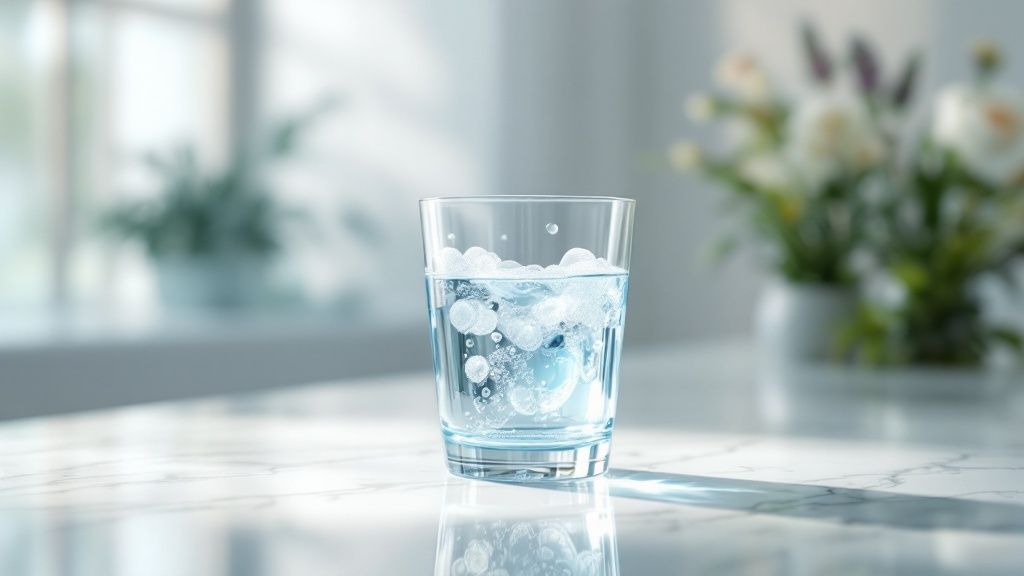
The right tools make a big difference in aligner care. For example, use your aligner toothbrush only for cleaning trays, and stick to gentle, clear soaps that won’t degrade the plastic. Stay away from harsh chemicals, abrasive toothpaste, and hot water since these can damage aligners through scratches, warping, or staining. Taking these precautions helps maintain clarity and shape over time. Learn more about proper aligner cleaning.
Optional Additions to Your Kit
- Soaking Solution: While not required, soaking solutions provide deep cleaning and remove stubborn stains. Look for aligner-specific solutions or try diluted hydrogen peroxide.
- Ultrasonic Cleaner: These devices use vibrations to clean hard-to-reach spots. They’re convenient but not essential.
Cost-Effective Alternatives
You don’t need expensive specialty products for clean aligners. Common household items work well and cost less. Mix baking soda with water for a gentle cleaning paste, or soak aligners in diluted white vinegar for an effective cleaning solution.
Maintaining Your Cleaning Tools
Your cleaning tools need care too. Rinse the toothbrush thoroughly after use and let it air dry. Clean the aligner case regularly with soap and water, replacing it every few months. Well-maintained cleaning tools help keep your aligners clean and protect your oral health throughout treatment.
Mastering Your Daily Cleaning Routine
Keeping your teeth straightening aligners clean is essential for successful treatment. You can maintain clean aligners without feeling overwhelmed by breaking the process into simple steps and making it part of your daily routine.
Establishing a Cleaning Schedule
Clean aligners help ensure the best results from your treatment. You should clean your aligners at least twice each day – once after breakfast and again before bed. A quick rinse after meals and snacks also helps keep them fresh between cleanings.
Step-by-Step Daily Cleaning Guide
Here’s a simple process to clean your aligners effectively each day:
- Rinse: Start with cool or lukewarm water to remove food particles and debris
- Brush: Use a soft-bristled toothbrush (separate from your regular one) with clear antibacterial soap – skip toothpaste since it can scratch the aligners
- Rinse Again: Wash thoroughly to remove all soap residue that could irritate your mouth
- Inspect: Check for any remaining debris or damage before putting aligners back in
Deep Cleaning and Soaking
While daily cleaning is important, soaking your aligners 1-2 times per week provides an extra thorough cleaning. This helps remove tough stains and kills bacteria. You can use special aligner cleaning solutions or mix baking soda with water. Many cleaning crystals need just 15-30 minutes to eliminate germs and odors effectively.
Cleaning On the Go
Keeping aligners clean while travelling just takes a bit of preparation. Pack a travel toothbrush, antibacterial soap, and a sturdy case. If you can’t do a full cleaning, rinse well with water works temporarily until you can clean them properly.
Following these basic cleaning steps helps keep your aligners fresh and working well throughout your treatment. You’ll get the best results from your teeth straightening journey with consistent care.
Advanced Cleaning Techniques for Perfect Results
Basic daily cleaning is essential for aligners, but sometimes, you need more thorough methods to keep them pristine and clear. Let’s explore some proven advanced cleaning techniques that help maintain optimal hygiene and ensure your aligners stay completely transparent.
Using Ultrasonic Cleaners Effectively
Ultrasonic cleaners create microscopic bubbles through high-frequency sound waves. When these bubbles collapse against your aligners, they remove even the tiniest particles of food and plaque. This method reaches spots that brushing alone might miss, like tight corners and grooves. While excellent for deep cleaning, ultrasonic devices work best as a supplement to – not replacement for – your regular brushing routine.
Choosing the Right Soaking Solutions
There are specialized cleaning solutions that go beyond standard cleaning tablets. These products contain ingredients specifically designed to clean deep within the aligner material. Some use oxygenating compounds that effectively break down stains and eliminate bacteria. Many are also formulated to be gentle on the aligner plastic, preventing damage while still providing excellent cleaning power.
Creating an Effective Multi-Step Cleaning Process
For the best possible results, use multiple cleaning methods together. Begin with gentle brushing to remove loose debris and prepare the surface. Follow this with a soak in a specialized solution – for example, use a hydrogen peroxide solution for 30 minutes. Complete the process with a cool water rinse. This thorough approach removes all traces of bacteria and buildup. Always check the manufacturer’s guidelines for any cleaning products you use. Regularly following these advanced cleaning steps will maintain clear, hygienic aligners throughout your treatment period.
Smart Storage Solutions and Maintenance Strategies
Just like a clean toothbrush needs a proper holder, your teeth aligners need proper storage to stay clean and effective. Smart storage helps maintain their shape, clarity and hygiene throughout your treatment journey.
Why Proper Storage Matters
Without proper storage, your aligners face several risks. They can collect dust, hair, and other debris, creating unsanitary conditions. Heat exposure can warp them and affect their fit. Plus, leaving them out makes them likely to get damaged or lost, disrupting your treatment plan.
Choosing the Right Storage Case
The best place for your aligners when not in use is their designated case. A good case provides protection from damage and contamination. Look for one that closes securely and is durable enough for daily transport. This lets you safely carry your aligners anywhere – whether at work, running errands, or travelling.
Maintaining Your Aligner Case
Think of your aligner case like your toothbrush holder – it needs regular cleaning too. Rinse it with cool water after each use and wash it periodically with mild soap and warm water. This prevents bacteria buildup that could transfer to your aligners. Make sure the case dries completely before storing aligners to avoid mould growth. Storage Tips for Different Situations
- At Home: Pick a consistent spot for your case, like your bathroom counter, to create a routine
- At Work or School: Keep your case in a clean pouch and avoid hot places like car compartments
- While Traveling: Pack your case in carry-on bags and bring a travel cleaning kit
Creating a Foolproof Storage System
The key is developing consistent habits. Always put aligners in their case when removing them to eat or brush. Clean and dry the case regularly as part of your aligner care routine. These simple but essential steps protect your investment and help ensure successful treatment. Following proper storage guidelines keeps your aligners clean, clear and working effectively throughout your smile journey.
Solving Common Cleaning Challenges
Keeping your teeth straightening aligners clean and clear is essential for successful treatment. Even with regular care, you may encounter some cleaning challenges along the way. Here are practical solutions for the most common issues to help maintain your aligners in optimal condition.
Addressing Stubborn Stains
Dark-coloured foods and drinks like coffee, tea, and curry can leave noticeable marks on aligners. When stains aren’t cleaned promptly, they become much harder to remove. Taking quick action is key to preventing permanent discolouration.
- Soaking Solutions: Remove tough stains by soaking aligners in specialized cleaner, diluted hydrogen peroxide, or baking soda mixed with water
- Gentle Brushing: After soaking, use a soft toothbrush to carefully clean stained areas. Skip abrasive cleaners that can damage the aligner surface
- Prevention Tips: Take aligners out before consuming staining foods and drinks to minimize contact
Eliminating Persistent Odors
When aligners aren’t cleaned thoroughly each day, bacteria can build up and cause unpleasant smells. Beyond just bad breath, this bacterial growth may impact your oral health. Here’s how to tackle odour issues:
- Daily Cleaning: Step up your cleaning routine by brushing aligners with mild antibacterial soap twice per day
- Soaking Time: Use cleaning solution or diluted white vinegar to soak aligners – this helps neutralize odours and kill bacteria
- Safe Storage: Keep aligners in their case when not wearing them to prevent exposure to bacteria in the air
Restoring Clarity to Clouded Aligners
Dried saliva and plaque often cause aligners to look cloudy over time. This not only affects their appearance but can impact how well they work. Fortunately, you can usually get the clarity back:
- Targeted Care: Focus brushing on visibly cloudy spots using a soft toothbrush and gentle soap
- Extended Soaks: Let aligners soak longer in cleaning solution to break down cloudy buildup
- Regular Rinsing: Rinse aligners after removing and before replacing them to stop cloudiness before it starts
Troubleshooting Table
| Problem | Solution | Prevention |
|---|---|---|
| Stubborn Stains | Soaking solutions, gentle scrubbing | Remove aligners before consuming staining agents |
| Persistent Odors | Increased cleaning frequency, soaking, proper storage | Thorough daily cleaning, regular soaking |
| Clouded Aligners | Targeted cleaning, soaking | Rinse aligners frequently |
By addressing these cleaning challenges right away, you’ll keep your aligners clear, clean and working effectively throughout your treatment.
Ready for a healthier, more confident smile? Visit Toothfairy today and discover how their app provides convenient access to expert dental care, including clear aligners and professional whitening solutions.
Last updated on February 10, 2025

Toothfairy Care Team
Toothfairy, is the world's smartest dental app, that connects patients to a dentist for a range of issues, from emergencies, cosmetics, prescriptions to virtual exams.
Toothfairy Care Team
Toothfairy, is the world's smartest dental app, that connects patients to a dentist for a range of issues, from emergencies, cosmetics, prescriptions to virtual exams.
